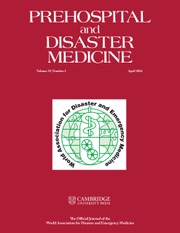No CrossRef data available.
Article contents
Crowd Simulation Models for Enhanced Mass-Gathering Medical Response: A Practical Application
Published online by Cambridge University Press: 21 May 2025
Abstract
The ability to predict a dynamic crowd response during Mass Gatherings may improve medical access and egress in a mass casualty incident. Validated models that accurately anticipate the chaos and crowd flow are not readily available. Recent advances in machine learning for crowd simulation offer an under-explored opportunity to improve emergency response strategies.
Train a crowd simulation model on video data and prove validity by comparing its predictions to an actual crowd-egress event.
A physics-based Social Force Model was used to simulate crowd movement. The model considers obstacles and other pedestrians in trajectory prediction, seeking best to estimate crowd density rather than individuals’ positions. Four parameters– maximum speed multiplier, motivation factor, social force factor, and obstacle repulsion factor –were found to be meaningful when comparing simulations to known pedestrian video. These parameters were optimized using an evolutionary algorithm to predict crowd response to an actual bomb scare in Times Square. A convolutional neural network model, CSRNet, was used to analyze crowd density frame by frame from an actual video for comparison.
Predicted density heat maps were compared to the video, demonstrating a realistic simulation of crowd egress. The pedestrians filter similarly in the prediction model and the ground-truth video. Divergence is mainly noted in the upper portion of the image, accounted for by the fact that the model currently does not adjust for additional population to enter the frame.
This study marks a significant stride in demonstrating the potential of machine learning in crowd-egress prediction using video data.
Information
- Type
- Meeting Abstracts
- Information
- Copyright
- © The Author(s), 2025. Published by Cambridge University Press on behalf of World Association for Disaster and Emergency Medicine


